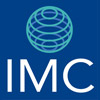Why companies are opting for Captive Insurance arrangements
January 28th, 2013Forbes?BrandVoice
Connecting marketers to the Forbes audience. What is this?
Forbes BrandVoice™ allows marketers to connect directly with the Forbes audience by enabling them to create content – and participate in the conversation – on the Forbes digital publishing platform. Each BrandVoice™ is produced by the marketer. More on BrandVoice™ here , or email us directly at [email protected].
CEO Network 1/28/2013 @ 10:25AM 25,302 views
Why Companies Are Opting For Captive Insurance Arrangements
BMO Harris Contributor, BMO Harris Bank
Follow Comments Following Comments Unfollow Comments
Follow Comments Following Comments Unfollow Comments
(Image credit: Getty Images North America via @daylife)
With the Affordable Care Act slowly becoming the norm, mid-sized companies are looking for health care options — and one such option is captive insurance.
Captive insurance is like an “in-house” benefits plan to cover the assets and risks of a company. It was initially intended as a cost-savings tool by which large corporations could get coverage for operations and liabilities that would have resulted in higher premiums had they sought coverage from traditional insurance companies.
For example, insurers forming captives say companies can pay as little as $150,000 for auto, general liability and workers’ compensation premiums where the average for middle-market companies can be between $25,000 to $3 million. Insurance companies that now create captives view middle-market companies as a new source of growth.
Some 30 states have passed legislation pertaining to captive groups, with Vermont leading the formation of groups, the New York Times and National Association of Insurance Commissioners reported.
There were 5,745 captives worldwide at the end of 2011, up from 5,587 in 2010, according to an annual Business Insurance survey of captive domiciles.
Self-Insured Plans
The Affordable Care Act is driving middle-market companies to consider self-insured plans, according to Business Insurance. ”Medical stop-loss captives,” Joanne Wojcik explained on the site, “allow self-funded employers to pool part of their excess medical claims costs with other like-minded companies.”
In 2010, some 58% of companies in the sector had self-funded health care programs, up from 44% a decade prior, the organization reported from the Kaiser Family Foundation/Health Research & Education Trust Survey of Employer-Sponsored Health Benefits.
Beginning in 2014, the act will change insurance for smaller groups, but those changes will not apply to self-insured plans, according to Matthew Buettgens and Linda J. Blumberg of The Urban Institute.
They say the law, when applied to low-risk, stop-loss policies, could lead to higher premiums — an average of 25% higher — for companies with smaller groups of insured employees. Medical stop-loss captives can help mediate those costs.
The Captives Boom
Chad Kunkel, senior vice president and group captive strategy leader at Artex Risk Solutions Inc., the captive management arm of Arthur J. Gallagher & Co., told Business Insurance he has seen a 100% increase in new businesses joining existing captives in the last year.
That kind of push hasn’t happened since 2003 when the economy weakened, he added. At that time, Kunkel said, businesses had to form new captive groups. Now, they can join existing ones.
Kunkel told Business Insurance he formed 60 new microcaptives in 2011, and expected to get similar interest in 2012. In the same article, Doug O’Brien, national casualty and alternative risk practice leader at Wells Fargo Insurance Services USA Inc., said he had formed 15 group captives for companies wanting to control workers compensation claims.
Setting Sights on the Middle Market
When the economy weakened again in 2008, companies slowed the formation of captive groups, but insurance companies are seeing increased demand for them as the economic downturn flattens, Property Casualty 360 reported.
Insurance companies are now looking to the middle market because more than 90% of Fortune 500 companies already do captives, according to Capstone Associated Services Ltd., a manager of small captive insurers.
The Section 831(b) captive or “small” property and casualty captive is one of the most popular choices for the sector, according to Capstone.
“The small captive’s growth is a natural continuation of the captive market’s expanding to the mid market from one dominated by the Fortune 500 companies,” Clete Thompson, vice president for Capstone, said in a statement. “Captive insurers have been around for decades and are no longer considered an unusual or innovative planning tool.”
Tax Benefits
By having their own captive insurance agencies, companies can save on costs and receive tax benefits, provided those premiums don’t exceed $1.2 million per year. That’s because an insurance company is able to deduct losses before payments have been made, according to Forbes contributor Lowell Yoder.
Middle-market companies looking for alternatives to traditional insurance offerings should consider the option of captive insurance, especially for the ability to control costs, achieve tax benefits and manage its risk.
